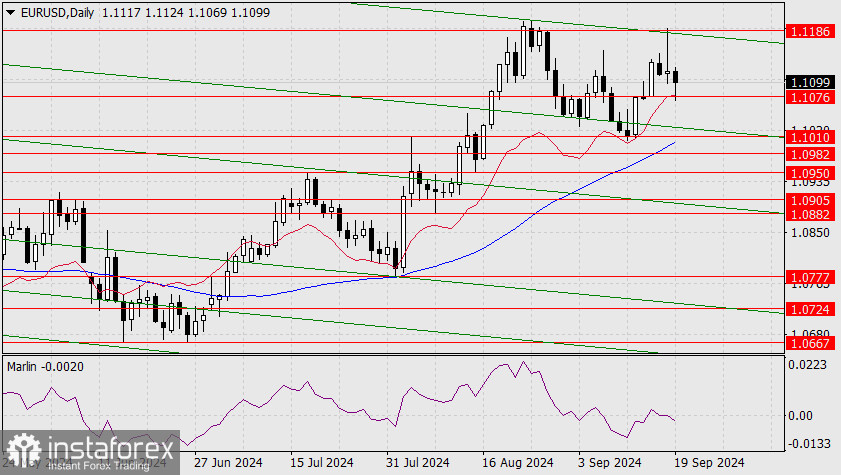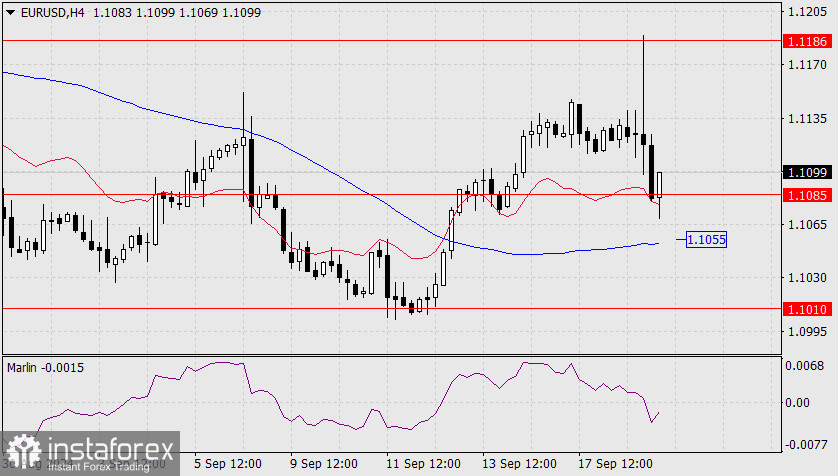So, the FOMC of the Federal Reserve lowered the rate by 0.50% yesterday, contrary to our expectation of 0.25% and against the forecasts of leading U.S. consulting agencies. Two conclusions can be drawn from this: first, the Fed is playing along with the markets, and second, the Fed is not genuinely concerned with the labor market or, conversely, confident in a steady decline in inflation but rather deeply worried about the exorbitant cost of servicing the national debt — $1 trillion per year. On Monday, an even stranger event occurred when a group of senators demanded that the Fed lower the rate by 0.75%.
From an outside perspective, the Fed's actions seem emotional and not well-calculated, which exactly repeats the central bank's behavior in 2020/22 when it "slept through" the inflation surge. Now, the Fed has issued its forecast for further rate cuts by 0.62% by the end of the year, which means at least two cuts of 0.25%, or one cut of 0.25% and another of 0.50%. There is also the option of one 0.50% cut. Markets are pricing in another 0.75% cut by the end of the year.
An interesting point: during the press conference, Fed Chair Jerome Powell stated that the 0.5% rate cut was "a commitment to us not falling behind."
But the euro didn't rise. It's clear that the speculative buying of the single currency since early July has already done its job — the market had already factored in this double rate cut.
Another, possibly more important, reason for the euro's decline is a large-scale investor flight from risk. The S&P 500 index dropped by 0.29% yesterday, though it had previously set a record high of 5,689.80. Oil fell by 0.83%, and gold by 0.32%. We've mentioned several times that the ideal trigger for a financial crisis would be a synchronized reversal of both the euro and the stock market. Yesterday may have been precisely that moment.

Technically, the euro has fully fulfilled its intentions by working within the range of 1.1076-1.1186. Now, it faces a battle with the support level at 1.1010, where the MACD line is being pulled. The Marlin oscillator on the daily time frame has moved into the negative area, confirming the false breakout upward. A false signal is an effective signal for a reversal in the opposite direction. Ultimately, we expect the euro to reach the range of 1.0882-1.0905.

This morning, on the four-hour chart, Marlin moved into the downtrend territory. The synchronous pattern with the higher timeframe strengthens its effect, reinforcing the downward vector. After breaking the support at 1.1075, the price will encounter the MACD line around the 1.1055 mark.
 English
English 
 Русский
Русский Bahasa Indonesia
Bahasa Indonesia Bahasa Malay
Bahasa Malay ไทย
ไทย Español
Español Deutsch
Deutsch Български
Български Français
Français Tiếng Việt
Tiếng Việt 中文
中文 বাংলা
বাংলা हिन्दी
हिन्दी Čeština
Čeština Українська
Українська Română
Română

